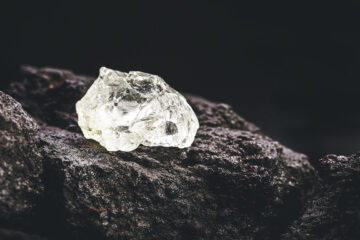A very good place to start
Jewish Family Identity Forum
Rituals in Jewish life series
By Candace R. Kwiatek, The Dayton Jewish Observer

As I awaited the birth of my first grandchild with joyous anticipation, I came across an intriguing question posed by Esther Jungreis in her book The Committed Life: “We plan all the details of babies’ lives, but do we think about the kind of Jewish home we want to create? What will make it a living Jewish home?”
A living Jewish home doesn’t come about by accident. Just as we purposefully design our children’s education, afterschool activities, and social lives, creating a vibrant Jewish upbringing takes commitment, planning, and even imagination.
The best place to begin, even for the novice to Judaism, is with the established rituals of childhood. Their formalized scripts eliminate guesswork and insecurity, just as the script for a stage play ensures continuity from performance to performance.
Furthermore, Jewish lifecycle rituals highlight key elements of the history, peoplehood, religion, and values that form the foundations of Jewish living.
Brit Milah: Often shortened to “bris,” brit milah is more than just the circumcision of a male child. It literally means “covenant of circumcision,” connecting the infant to the first Jew, the biblical Abraham, who circumcised himself at God’s command, and to the idea of obligation to God (covenant) — and not just to self or other people.
Right from the start, living Jewishly is about fusing the human and the holy. Rather than a tribal symbol of strength or manliness, the brit milah performed in infancy reflects a lifelong commitment to God’s commandments. This blend of the worldly and the spiritual is further underscored by the command to circumcise specifically on the eighth day (even on Shabbat), the biblical “eight” indicative of the heavenly or miraculous.
What could be more miraculous than a commitment to the covenant that not only provides a lifetime of ethical and moral guidance but also persists among an entire people that has survived, despite all odds, for more than 4,000 years?
How else does the bris ritual encapsulate key Jewish ideas? It is traditionally held at home, the center of Jewish life, together with family and friends. A chair is set aside for the biblical Elijah, who is invited as the symbolic guardian of the commandments. And just as parents are responsible for their children’s Jewish upbringing, technically it is the father’s obligation to circumcise his son, although the procedure is usually performed by a mohel, a trained ritual circumciser, who acts as the father’s agent.
The centrality of the home and the importance of community, Jewish history, covenant and commandments, the role of parents: all are fused into the ritual of brit milah.
Pidyon ha-Ben, Redemption of the First Born: The reenactment of this biblical ceremony is relegated to firstborn males who are neither Kohens (descendants of Aaron, the first high priest), nor Levites (descendants of the tribe of Levi).
In times past, believing that the first and best of all things belonged to God, all firstborn sons were destined to serve in the Temple.
After the incident of the golden calf, God replaced all firstborn with the Levites who had refused to participate in the heresy.
Yet, even today, firstborns still retain a measure of sanctity and have to be redeemed from their priestly status.
The resulting ritual is usually performed when the child reaches 31 days of age and involves paying a small sum (today, usually five silver dollars) to a Kohen who then donates it to the synagogue or charity.
Every ritual in Judaism informs Jewish living. Pidyon ha-Ben is about choices and consequences and the impact of the past upon the future. It’s about gratitude that God spared the Jewish firstborn during the Exodus.
According to Rabbi Shraga Simmons, it’s a reminder that we owe God our best and that, in fact, even our dearest possessions, our children, belong to God.
Naming: Officially given at a bris or in a synagogue ceremony when the parents receive an aliyah (are called up to the Torah), a person’s Jewish name is used for all religious purposes, documents, and prayers.
Although the ceremony itself is brief, names have been significant since Judaism’s beginnings. They reflect identity and contain memory: Abraham, the father of many. Moshe, the one who draws out. Jacob renamed Israel, the one who struggles with God.
Despite the emphasis on names in the Bible, there are no religious or halachic (Jewish legal) guidelines for naming other than the addition of Kohen or Levi as appropriate.
But, the choice of a name is still significant today. Naming is about connecting with a people, with individuals, and with values.
Naming after deceased relatives or living role-models, names from the Bible or modern Israel, secular first names and Jewish middle names: the traditions vary depending on local customs and cultural affiliation.
But names only become important if their stories are shared.
In his book, To Be A Jew, Rabbi Hayim Donin reminds us, “The custom loses all meaning and no one’s memory is really honored if the name that the child is given is never used, is forgotten by all…never referred to by a family and…never used in the synagogue, it obviously loses all significance.”
A name is a permanent, lifelong symbol, but can only “live” Jewishly if its story is told and if it is used regularly.
What makes a living Jewish home? It begins with the formalized rituals that offer the keynotes of Jewish history, values, religion, and peoplehood to inform the mind, guide one’s actions, and inspire the soul.
But a living Jewish home also needs a multitude of informal rituals that creatively respond to the child and reflect the family’s interests and needs. This topic — and the modern desire to include girls in rituals — will be the subject of my next column.
Family Discussion: What kind of Jewish home do you want? How have the formal rituals of new life influenced your living Jewish home? How else could they do so?
Literature to share
Before You Were Born retold by Howard Schwartz: Told in simple prose by a master storyteller and illustrated in ethereal pastels and soft lines, a rabbinic legend about the unborn child’s experience comes to life. The guardian angel Lailah shares the secrets of the world with the infant, but just before birth she presses her finger on the child’s lips causing all that was learned to be forgotten. The permanent indent on everyone’s upper lip is a reminder of all the wondrous things that can be learned again.
By Fire, By Water by Mitchell James Kaplan: For the historical fiction lover especially, and for those who simply love an engaging, fast-paced story, this well-researched novel about the Inquisition and the expulsion of the Jews from Spain is an absolute must-read. Focusing on the character of Luis de Santangel, a converso in King Fernando’s court, Kaplan captures the competing faiths, social classes, and loyalties of the era and, as the author notes, creates a prototype of the modern man as well.



